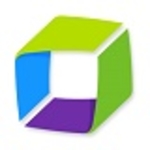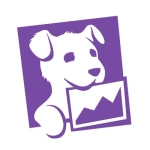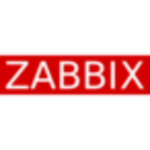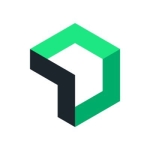What is our primary use case?
For business purposes, the analytics side is a very unique part of the APM solution. There are lots of different APM products in this ecosystem, but other than AppDynamics, there is no business insight or very limited capacity. Other APM solutions on the business side are limited. Most of our bank customers and fintech customers use the Analytics side with very high priority.
From the C-level perspective, they mostly do not care about the operational metrics, for example, response time, CPU memory, or different kinds of technical metrics. They focus on the business side. The business impact of their application: Is it good? Is it healthy? Is their revenue increasing or not? Or stable? With the business analytics side, we provide a hundred percent of this business info. Before their end-to-end process, we provide real-time business metrics.
For example, one of our banking customers uses business analytics to measure real-time ATM transactions, how much their customers withdraw or deposit from the ATM machine, or maybe POS machine, or in Europe, SEPA and SWIFT transactions. Customers manage their transactions from another site. We also measure real-time money transfers.
From each level, for example, ATM side, Internet banking side, mobile banking side. The business analytics side is the further version of an APM product for all APM products.
How has it helped my organization?
When you use the full AppDynamics product, for example, analytics and the performance measuring site, when you gather all this information correctly and fully, you can easily talk the same language between business and technical teams.
Most of the issue is not only the exact application problem or response time problem. Mostly, we face the issue of telling this problem or understanding the problem from the business side to the technical or operational team side. We cannot use the transition between this level. So AppDynamics gives us a good approach, good visibility, and a good language for both teams.
For example, business, operational, software, and database teams use the same language to understand each other very easily. It decreases the meantime to resolution and TTR metrics, for example.
What is most valuable?
It’s a very centralized solution from the analytics perspective. So, when users expand their licenses, they can expand their visibility. For example, they measure the license count from the analytics perspective, daily transactions. They measure daily transactions, for example. One transaction analytics license gives visibility to one million transactions per day.
So if users want to expand the visibility, if users want to expand their usage of the Analytics site, they need to expand the license also, based on your transactions per day. So it’s easy.
The premise has its own AI capabilities, both on the SaaS and the on-prem side. So, if users want to use this AI feature, other than the other APM product, for example, Dynatrace, users can easily use it as a disconnected on-prem application. This means there is no need to communicate with the Internet connection or product owners, only the communication between the data center and the Internet site. So users can easily use it as a disconnected on-prem, which is the only solution in the APM ecosystem. For example, the big competitor in this area is Dynatrace. Dynatrace has its own daily static analytics features, which need a source connection.
So, even if users use an on-prem solution, if they want to use the AI options, they need to communicate with their analytics units via an Internet connection. This is important from a technical perspective.
Another thing is it’s totally free when users own this product with different kinds of agents. Users can also own these AI features. For example, when someone looks at the Dynatrace site, they need to pay for daily data units. So it’s cost-based. It’s a transaction-based cost with another product, but in AppDynamics, there is no additional cost. So this is one of the advantages.
What needs improvement?
AppDynamics and the other APM products are really, really much further than other products. So, with this perspective, there are some minor enhancements that can be made, but for the major sites, there is no negative impact or any alternative application.
For example, some cosmetic enhancements. We live in Turkey, so we have our currency, we have some number formats, or something like that. Sometimes, we can face issues getting the business metric and using or calculating it because of this format or some locality issue. So, I’m specifically talking about this kind of enhancement to enhance its localization capabilities.
Buyer's Guide
Splunk AppDynamics
March 2025
Learn what your peers think about Splunk AppDynamics. Get advice and tips from experienced pros sharing their opinions. Updated: March 2025.
848,207 professionals have used our research since 2012.
For how long have I used the solution?
I have been using it for more than 12 years now. I have been using it since the beginning. I use it both on cloud and on-premises.
More than as an application performance management [APM] site other than AppDynamics, I have used APM products for more than twenty years.
What do I think about the stability of the solution?
It has been super stable. I can easily rate it a ten out of ten because there is no overhead or something like that. There’s no code application, and no code declaration is needed here, so it’s very superior.
What do I think about the scalability of the solution?
From an analytics perspective, when users expand their visibility, there’s no need to expand the license level other than, for example, there’s no additional code application, no additional technical improvement, or something like that. Users only need to expand the license based on their daily transactions. So it’s super easy.
I would rate the scalability a ten out of ten. It has been stable, scalable and manageable.
In Turkey, we are working with more than 75 different companies. We are also responsible for the EMEA region, including Qatar and Austria. So, these are medium to larger organizations.
How are customer service and support?
This is a global company, so there are lots of different support teams all over.
How would you rate customer service and support?
Which solution did I use previously and why did I switch?
I used to work with lots of different APM products in my personal career. More than maybe six different products, for example, Dynatrace, CUI, HP Diagnostic (now Micro Focus APM solutions), and other free APM solutions, open-source APM services I used to work with.
We are an APM company. So we make PoCs with lots of different APM vendors throughout the years. For example, last year, I made maybe three different PoCs with other APM vendors.
But now, for the last nine years, my personal technical perspective and the customer needs in Turkey really align with AppDynamics because it’s a very unified platform. It’s very easy to understand, easy to use. So because of that, I’ve been working with AppDynamics for the last nine years.
How was the initial setup?
We can divide it into two sections. One of them is the agent-based installation, and the other one is the platform-based.
This is a server-side application, so it has lots of different components. Based on my experience, it is easier than other APM solutions as a platform and data warehouse. But the agent side is very different because there are lots of different applications.
The agent side includes .NET agent, Java agent, Linux agent, Windows agents. There are different types of products on the agent side. It depends on the agent types you need. But from a general point of view, I used many different kinds of APM products, for example, NetTrace, Riverbed, Eternity, and HP Diagnostics. I have a license here too.
So, the initial setup has been simple for me.
What was our ROI?
AppDynamics delivered financial benefits to our clients. For instance, we are monitoring the money transfer services’ performance metrics, such as response time, how many calls per minute are in a specific time range, and how many other transactions are per minute in a specific time range. These are the technical metrics, the performance metrics specifically. But we are also measuring their business metrics inside the method parameters for HTTP data collectors.
So we can get this business metric data easily without any code application. This is a very important part. We don’t need any code declaration or development on the development side. We can measure parameters like the amount of money, the success of their transactions, and other business success metrics from these method parameters without any code declaration.
Another example is a loan team in a bank that measures their loan services from their clients. They track how many applications are processed within a specific time range, the success rate, and the correlation of their performance metrics, such as slowness or error rates, with their business outcomes.
For example, yesterday, they released a new application update to address performance issues. Today, we are monitoring their application performance. After this release, their performance went down, response time increased, and success rate decreased. By measuring these performance metrics, their C-level executives and business teams can correlate these performance issues with business impact.
Normally, there’s a baseline, for example, on Wednesday from 10 AM to 11 AM, where they process ten loan applications per minute. If this release negatively affects the business, they can see that response time is increasing, error rate is increasing, and it is impacting their loan applications. So, instead of processing ten applications per minute, they might only process five or three. They can easily measure this impact on their business.
What's my experience with pricing, setup cost, and licensing?
The pricing is very competitive because the prices depend on the customer and customer priority. Based on my knowledge, if I can correlate the business effect and business opportunity to their price, I would rate it a nine out of ten, with one being not cost-effective and ten being very cost-effective.
What other advice do I have?
I would recommend it to other users. Overall, I would rate it a nine out of ten.
Which deployment model are you using for this solution?
Hybrid Cloud
Disclosure: My company has a business relationship with this vendor other than being a customer:


























